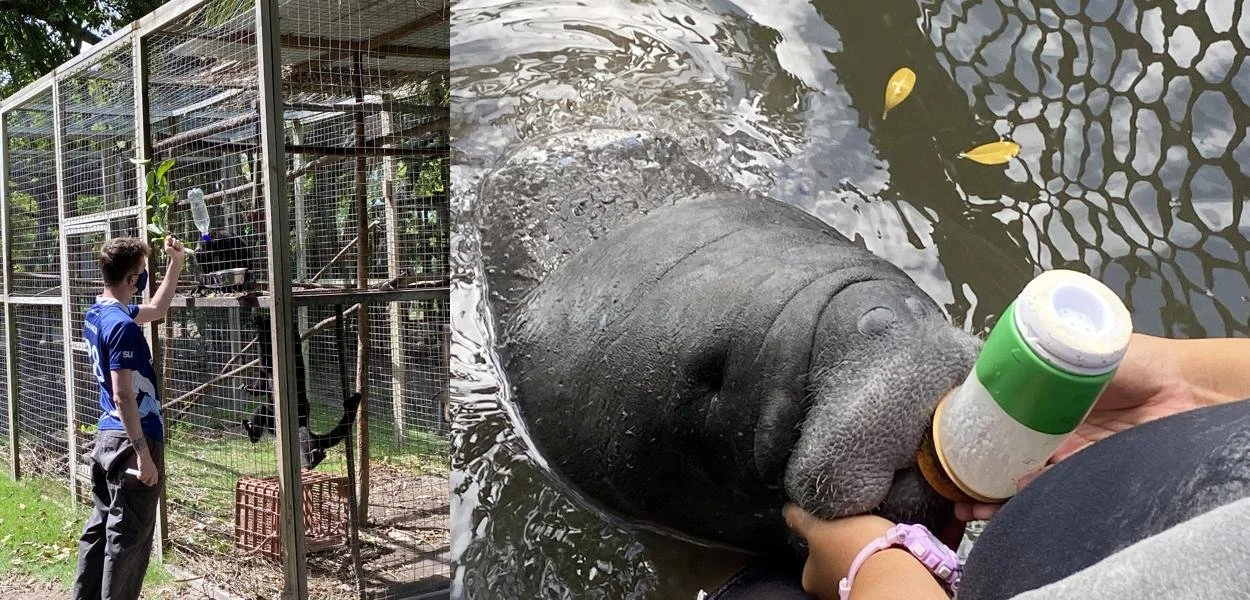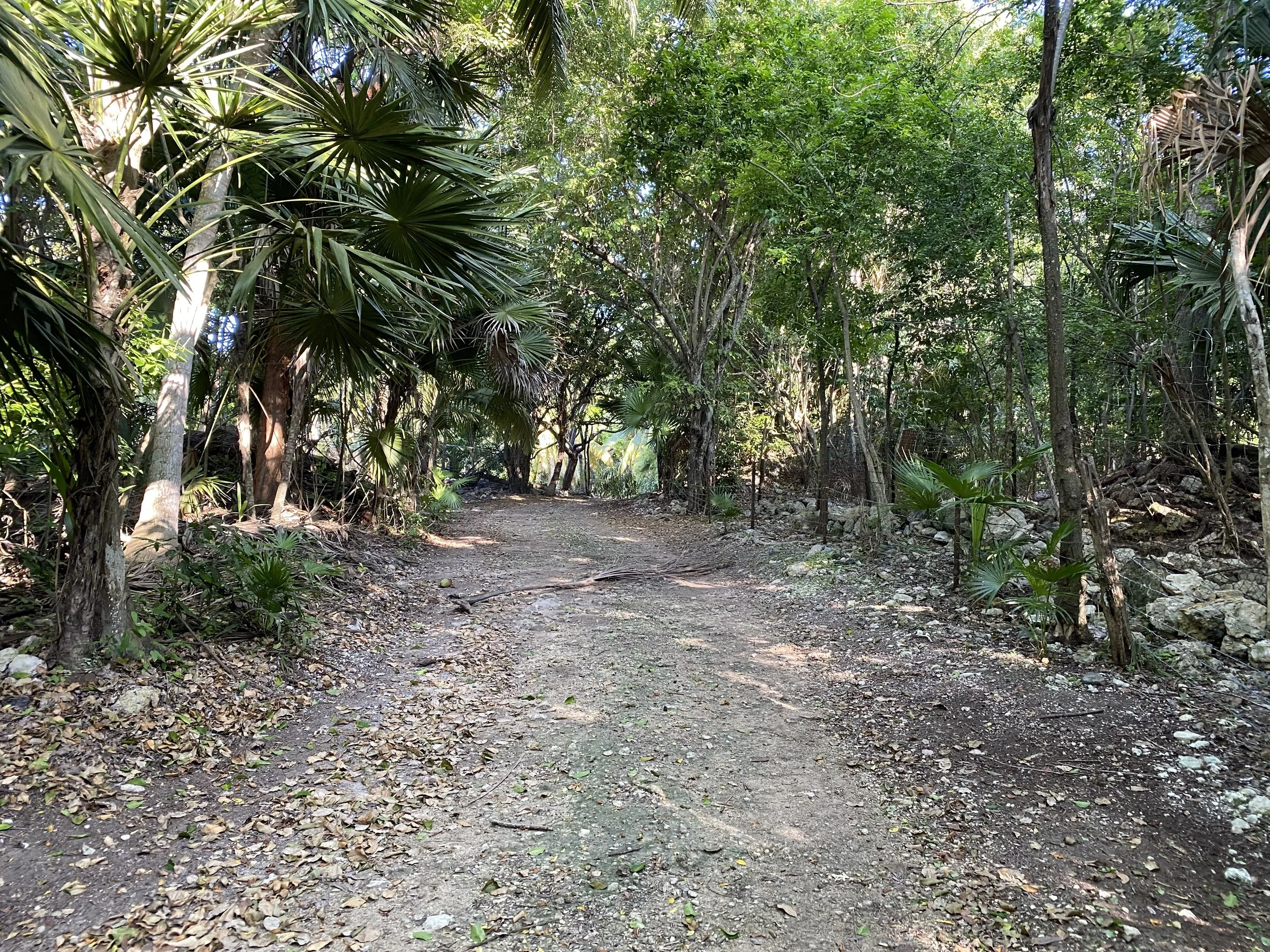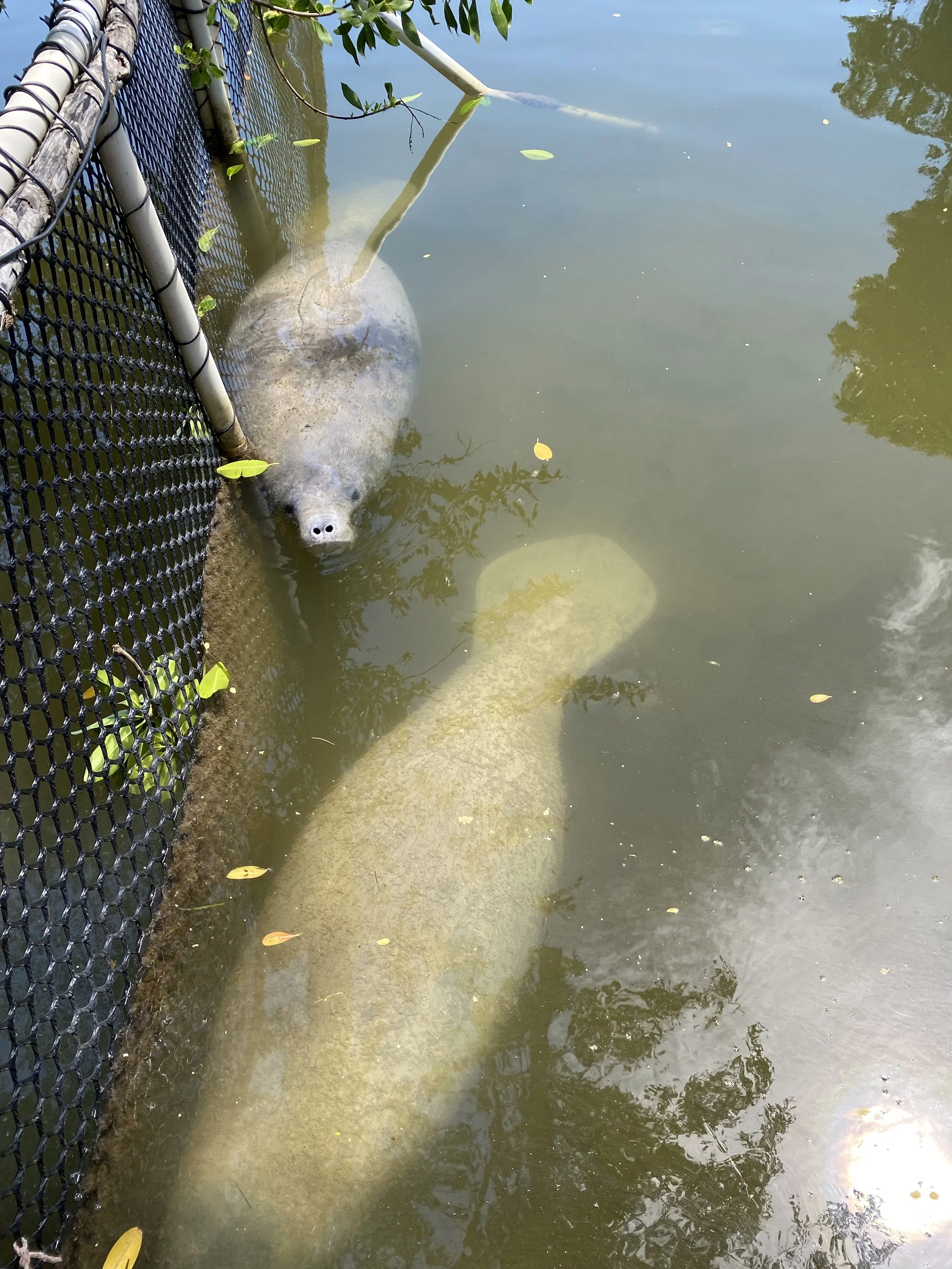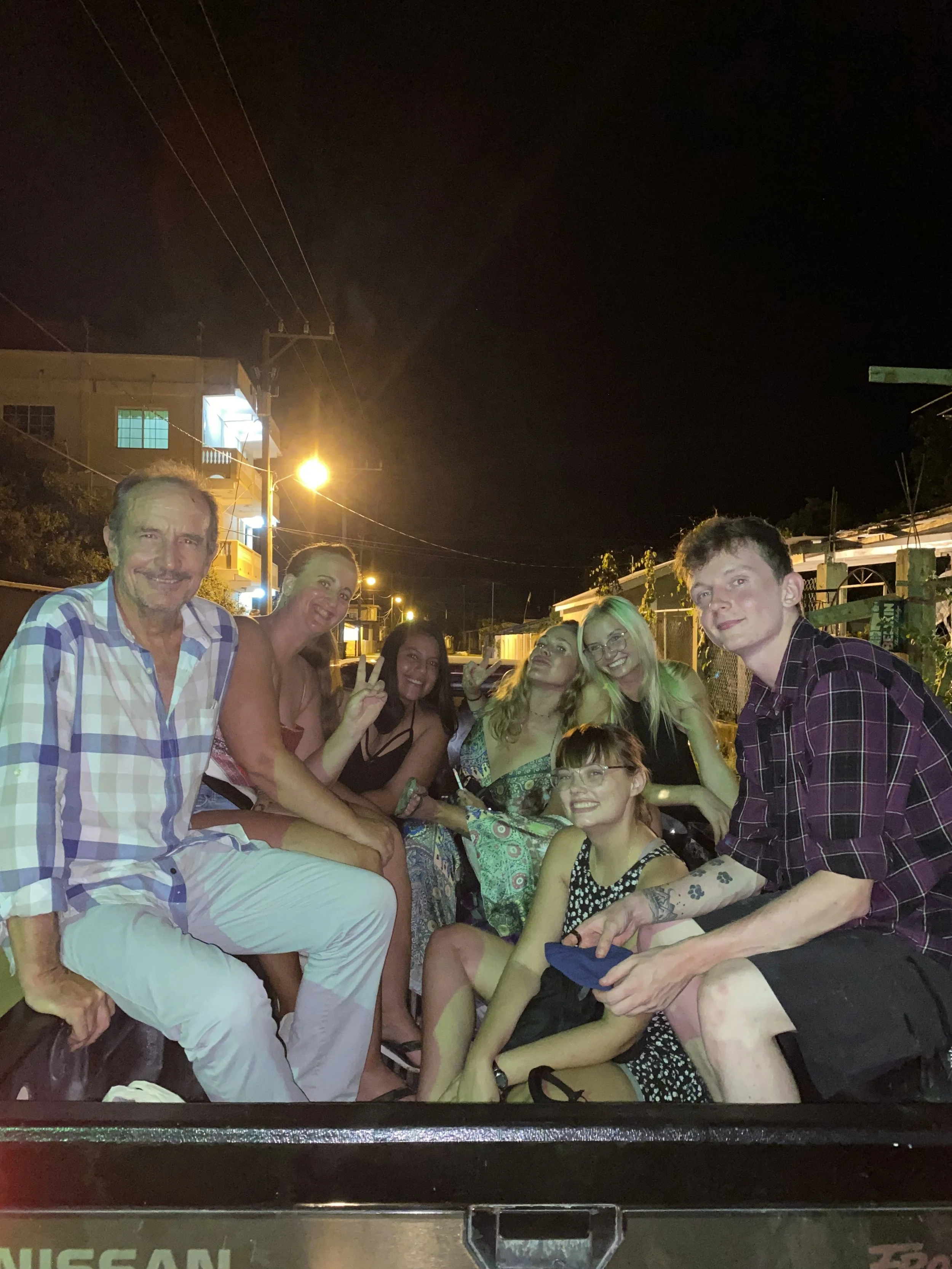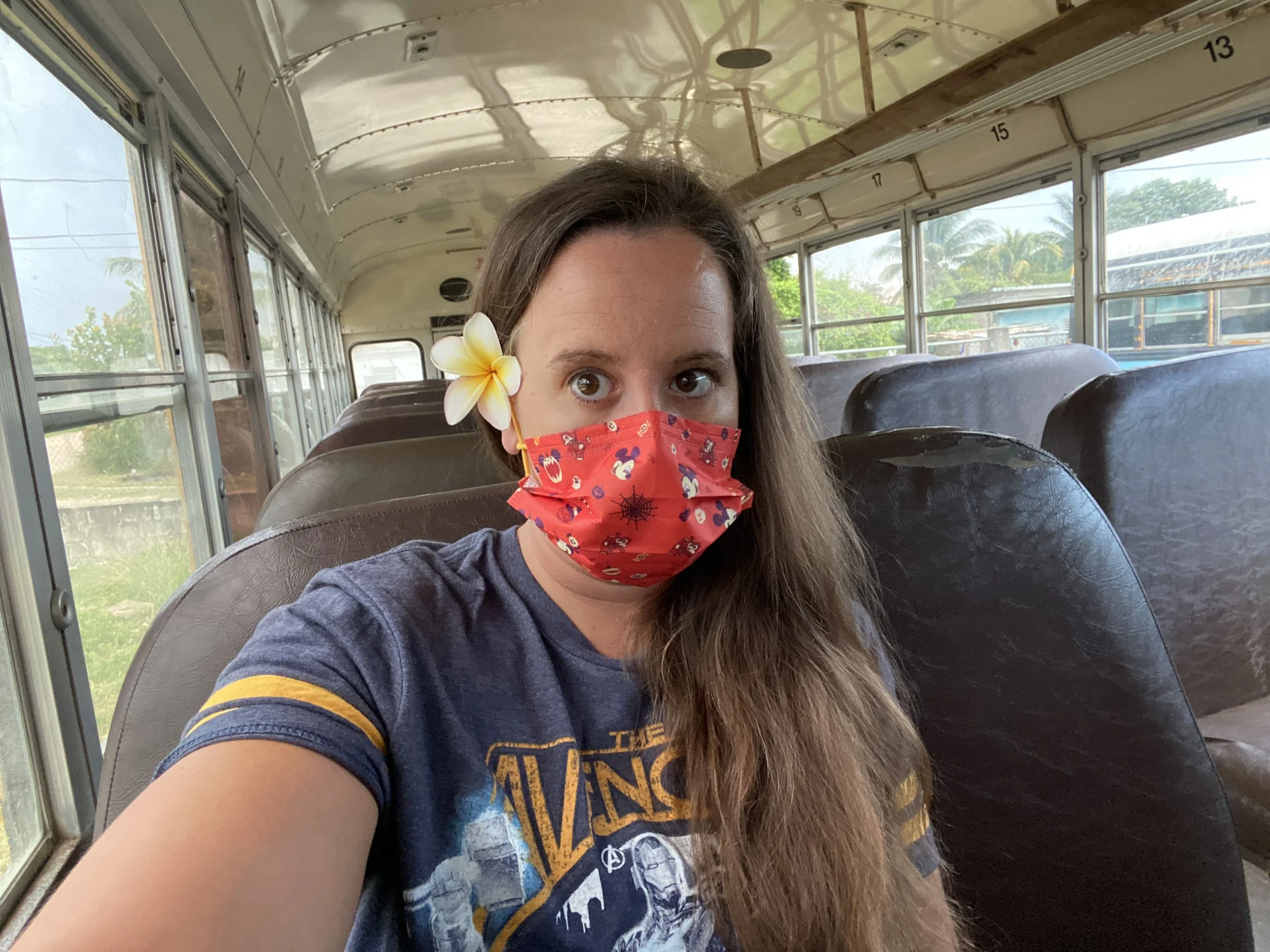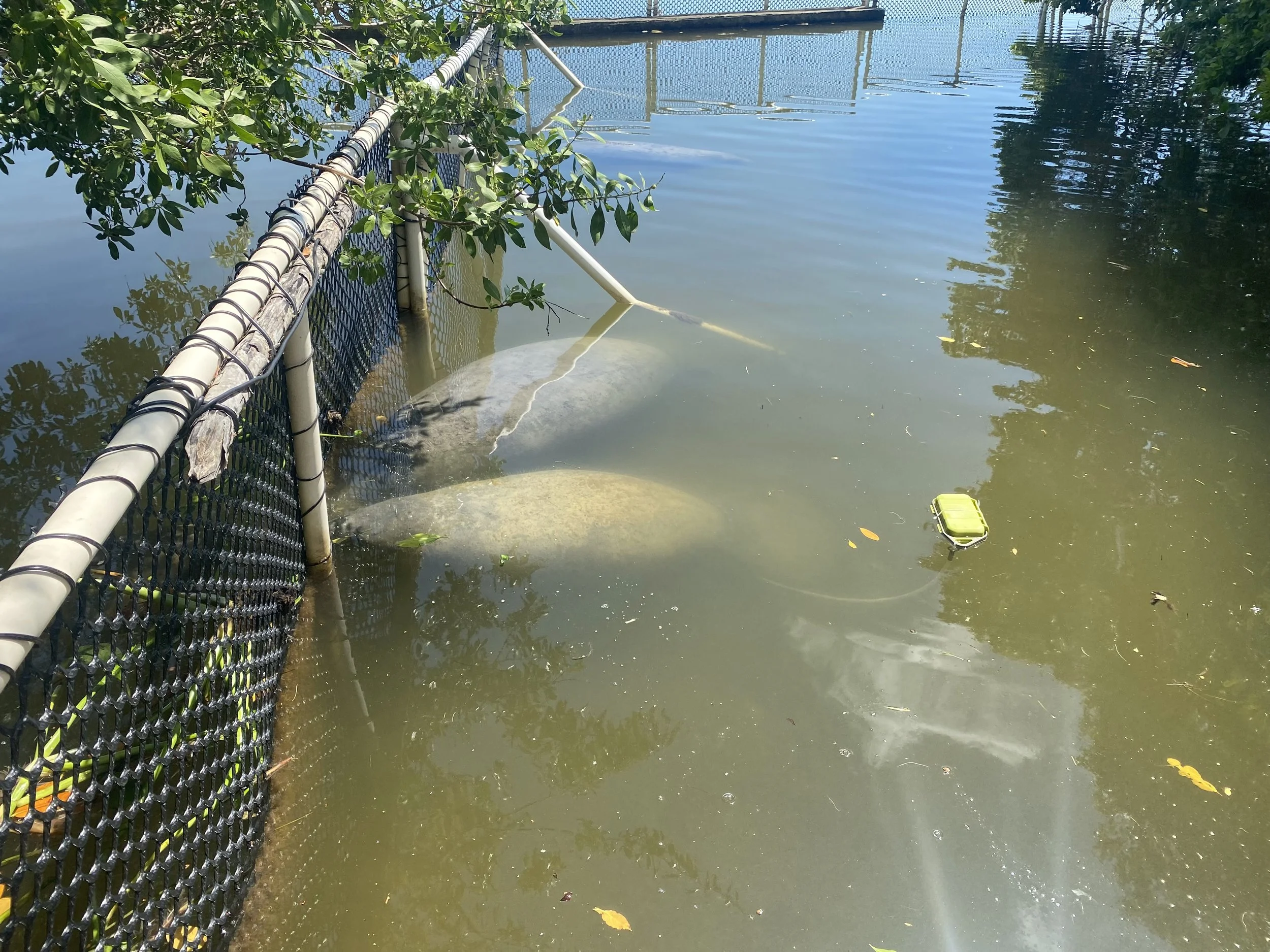Healing Hands & Gentle Giants: My Time Rehabilitating Manatees in Belize
Belize was slightly over my original budget of $1,000 USD/month, so I started thinking — what if I volunteered instead? A quick Google search later, I found exactly what I was looking for: a chance to help rehabilitate manatees.
That’s how I discovered Wildtracks, a small but incredible non-profit conservation organization tucked away near the quiet fishing village of Sarteneja, Belize. The more I read, the more I knew it was meant to be. I emailed right away, filled out their volunteer survey, and soon heard back from Paul and Zoe, the founders. They carefully screen volunteers to make sure people are there for the right reasons — not for social-media clout, but because they genuinely care.
When they confirmed they had space in the Manatee Rehabilitation Program, everything fell into place. My contract in Hong Kong ended mid-September, so I signed up immediately, paid the $750 USD program fee, and read my welcome package about a hundred times before arriving.
Who could possibly resist these faces? They’re the reason I chose to volunteer at Wildtracks Belize — and the start of one unforgettable adventure.
About Wildtracks
Wildtracks runs two main rehabilitation programs:
🐋 The Manatee Rehabilitation Centre, which cares for orphaned or injured manatees like Teek and Nugget and prepares them for release.
🐒 The Primate Rehabilitation Centre, which rescues and rehabilitates Yucatán black howler monkeys and Central American spider monkeys taken from the illegal pet trade.
They also help raccoons, deer, ocelots, margays, and peccaries (wild pigs), as well as nearly any injured animal that deserves a second chance.
Founded in 1990 by Paul and Zoe Walker, Wildtracks works closely with the Belize Forest Department and other partners. Their mission is:
“To work toward the sustainable future of Belize’s natural resources through conservation, rehabilitation, education, and community engagement.”
It’s a place built on heart, hard work, and hope — and being part of it changed the way I see conservation forever.
Wildtracks runs two incredible rehabilitation programs — one for orphaned or injured manatees like Nugget (right), and another for rescued primates like this curious howler monkey (left). Different species, same goal: a second chance at life.
Arrival & Settling In
Before heading to the sanctuary, I spent a couple of days on San Pedro. After living in Hong Kong — surrounded by skyscrapers and constant motion — the quiet rhythm of island life felt surreal. I had to adjust to slower days, soft waves, and star-filled nights.
From San Pedro, I took a boat to Sarteneja, a small fishing village far from the tourist path. Locals probably wondered what a foreigner was doing heading that way, but I couldn’t wipe the smile off my face.
An older local man named Dion picked me up and drove down a long, bumpy dirt road to Wildtracks. By the time I arrived, most of the team was finishing chores for the day. I met Paul, who greeted me warmly, and soon after, my new roommate Lara from the UK.
The long, bumpy dirt road leading to Wildtracks.
Our hut was simple — two beds, a bathroom, and a single light switch. No Wi-Fi, no outlets. If we wanted to charge anything, we had to walk to the main house. It was the perfect digital detox I didn’t know I needed.
That evening, I watched the volunteers feed the four big girls — Callie, Sally, Chiki, and Hope — each with their own personalities. Later, we had a going-away party for another volunteer, complete with dinner, laughter, and drinks.
The next morning, Kyra led my orientation. She walked me through a PowerPoint presentation about safety, Wildtracks’ goals, why they started, and the challenges wildlife face in Belize. I learned how manatees arrive at the sanctuary, how new babies are cared for, and the process of rehabilitating them back into the wild. We also discussed the monkey rehabilitation program — and I even got to watch the volunteers feed the monkeys, the one and only time I saw them during my stay. From that day on, I was officially part of the Manatee Team.
No Wi-Fi, no noise — just the jungle, the lagoon, and the sound of howler monkeys.
Life at the Lagoon
Our team of four — Ana, Mike, Gus, and me — handled the daily care of the manatees. Life at the lagoon was peaceful but busy, always framed by the deep, echoing calls of howler monkeys that sounded like dinosaurs rumbling through the forest.
Our morning routine: teamwork, splashes, and hungry faces.
The Manatees
There were six manatees in care during my stay:
The Big Girls
Callie – the big scaredy-cat, cautious but curious.
Sally – the sweetheart who loved attention and people.
Chiki – the gentle giant, calm and graceful.
Hope – independent, confident, and always the leader.
(That’s also the order they lined up for feeding — unless Sally got cheeky and tried to sneak an extra sip!)
The Babies: Teek and Nugget.
Teek was shy and timid — he scared easily and needed an experienced handler. Nugget was the opposite: playful, social, and loved hugging your leg while drinking her milk.
The Wildtracks family — the four “big girls” (Callie, Sally, Chiki, and Hope) alongside the two babies, Teek and Nugget.
Occasionally we saw Twiggy, a manatee “hard-launched” about five years earlier. We measured her at 2.58 m, and everyone suspected she might be pregnant — a year after I left, she was spotted with a calf.
Ana and Gus measuring Twiggy, a returning manatee once released back into the wild.
Two males, Mitch and Lucky, had been released about two years before and still visited the lagoon occasionally.
We were never allowed to interact with rehabilitated manatees like Twiggy, Mitch, or Lucky. If they approached, we had to ignore them completely so they wouldn’t associate humans with safety or food.
Mitch and Lucky — two released males still visiting the lagoon from time to time.
Daily Routine
5:45 a.m. — Sunrise Photo
Every morning before feeding the manatees, I took a photo of the lagoon. The water was still, the sky painted in pastels, and it quickly became my favorite part of the day.
6:00 a.m. — Baby Feed #1
The babies, Teek and Nugget, were fed five times daily — 6 a.m., 9 a.m., 12 p.m., 3 p.m., and 6 p.m. We always arrived fifteen minutes early to prep bottles. I didn’t start feeding them until Mike left, since Ana wanted to limit who they socialized with. Once I was trained, I fed Nugget, while the more experienced volunteer handled Teek.
7:00 a.m. — Big Girls Feed #1
The four girls — Callie, Sally, Chiki, and Hope — were fed and then released for the day. It was a “soft launch,” letting them roam freely and return if they wanted milk later.
8:00 a.m. — Bird Feeding #1
We fed and watered the birds twice daily, at 8 a.m. and 3:15 p.m.
9:00 a.m. — Baby Feed #2
If I wasn’t busy, I’d often walk down to watch and take photos. Watching Teek and Nugget drink their bottles never got old.
12:00 p.m. — Lunch
Buffet-style and mostly vegetarian — beans, rice, tortillas, vegetables, and sometimes mac & cheese, my favorite.
1:30 p.m. — Sea Grass Duty
Two to three times a week we kayaked across the lagoon to collect buckets of sea grass, the manatees’ main food source.
3:00 p.m. — Baby Feed #4 & Bird Feeding #2
If I wasn’t helping with the baby feed, I’d sometimes go feed and water the birds early, so the others had one less task to do. In the early weeks, I only handled the big girls, so it felt nice to help out wherever I could.
4:20 p.m. — Big Girls Feed #2
If the adults came back, they were fed again. Usually Hope stayed out, Sally returned, and sometimes all four would stay out overnight but were always back by morning.
6:00 p.m. — Final Baby Feed
The mosquitoes were brutal. We weren’t allowed to wear repellent until after feeding to avoid contaminating the water, so by evening everyone was covered in bites.
7:00 p.m. — Dinner
Once every animal was fed, we’d eat together. Some nights were quiet; others ended with drinks and laughter depending on how tired we were.
Life at Wildtracks: busy, beautiful, and full of purpose.
Weekly Work
Cleaning: Once a week we bleached bottles, tables, counters, and floors in the feeding hut.
Deliveries: We only received one major delivery of water hyacinth during my stay, but once it arrived, we spent hours reorganizing the ponds to move the plants closer for easier access. The mosquitoes were relentless, and the ground was crawling with fire ants — shoes, pants, and a sweater were essential.
Sea Grass Collection: Two or three times a week we kayaked out to gather fresh sea grass. Everyone took turns paddling out, harvesting, and hauling it back.
Collecting fresh seagrass for the manatees — their main source of food at Wildtracks.
Friday Night Tradition
Every Friday night, we piled into the back of a pickup truck and rode into Sarteneja for dinner. Dion, the same driver who picked me up on arrival, always took us. Our first stop was Da Chong Shop — to stock up on alcohol for the week — then we’d head to one of the small local restaurants.
I usually ordered chicken nuggets and fries, while others went for lionfish — an invasive species caught locally and cooked fresh. It was delicious and helped protect the reefs at the same time.
Those nights were full of laughter, dusty roads, and starry skies — the perfect reward after a long week.
Friday night tradition — heading into Sarteneja in the back of a pickup for dinner and laughter under the stars.
The Day of the Missing Tracker
One morning, Sally’s tracker went missing. Ana went one way along the lagoon, and I went the other. I walked for about thirty minutes in one direction, scanning the mangroves carefully, before turning around. About fifteen minutes later, I stepped back without realizing Mitch was right behind me — I almost stepped on his face!
From then on, I wasn’t alone. The four girls (Callie, Sally, Chiki, and Hope) followed me, along with Mitch and Lucky. They shadowed me for nearly forty-five minutes, even as I turned back toward the main house. I couldn’t stop smiling — it felt like walking dogs, except these ones weighed half a ton.
When Ana and I regrouped, neither of us had found the tracker along the shoreline. She pulled out her laptop to trace its last known signal. We mapped out the lagoon, grabbed kayaks, and paddled back out — Ana in the inflatable, me in the leaky plastic one.
We were far from the house when we decided to turn back. We checked the map again and realized we’d already passed the general area. Around that same spot, a gust of wind pushed Ana into the mangroves, popping her kayak, and about five minutes later she spotted something green tangled in the branches — the tracker!
We were overjoyed when we found it. We tied the popped kayak to mine and started paddling back as fast as we could, but after about five minutes, my kayak began taking on water. On the way back, we collected sea grass to make use of the trip. When Ana realized it was time to feed the babies, she asked if it was okay to leave me. I told her to go — I’d manage.
So I did — swimming, wading, and dragging both kayaks back while collecting more sea grass along the way. Half my body was underwater, the rest protected by my UV shirt and sunscreen. By the time I made it back, I was completely spent from all the paddling, swimming, wading, and hauling sea grass — but I couldn’t wipe the smile off my face.
Paddling across the lagoon in search of a missing manatee tracker.
Staying Longer
Mike had originally planned to stay for three months but left after two. That would have left only two people to handle all the manatee duties once I left mid-October. I offered to stay longer so the team wouldn’t be short-handed. Paul refused to charge me, saying I was doing them a favor — but honestly, I was happy to help.
If I hadn’t already promised to meet my friend Bryce in Guatemala for his birthday, I probably would’ve stayed even longer.
Decided to stay longer… how could I not?
The Realities of Remote Life
Not everything was easy. Someone stole the solar battery that powered the water pump — and for weeks we had no running water. We hauled lagoon saltwater in buckets for washing and flushing, and carried large jugs of clean water for the birds and manatee milk. Since I was always in the lagoon feeding the manatees and then showered with lagoon water, I was never really clean — just slightly less salty.
For laundry, we had two options: hand wash it ourselves, or pay a small fee to have a local wash it for us. I always chose the second option. It took two days to get clothes back, but they came back spotless, fresh, and perfectly folded — worth every penny.
Halfway through my stay, I had to renew my visa — a visitor visa in Belize only lasts 30 days. I took a chicken bus to Orange Walk, paid the $100 USD renewal fee (it used to be cheaper before COVID), grabbed lunch, and wandered the town while waiting for my passport. When I got back to Sarteneja, I decided to walk to Wildtracks — a long, sweaty mistake that ended with me completely covered in mosquito bites.
Despite the heat, bugs, and salty showers, I loved every second of it.
Bus rides and border stamps — the less glamorous side of travel.
Understanding the Manatees
In the wild, baby manatees stay with their mothers for up to two years, learning how to find food and survive. When they lose their moms, Wildtracks steps in.
The goal isn’t just to feed them — it’s to teach them how to be wild again.
They’re introduced to seagrass, mangrove leaves, and water hyacinth, learning what’s edible and how to forage. Each feeding, each swim, and every new snack prepares them for the day they’ll return to the sea — independent and ready.
Bottles ready for feeding time — each meal a step toward independence.
Why Wildtracks Matters
Wildtracks isn’t just a sanctuary — it’s a family. From bottle-feeding babies to dragging kayaks through the lagoon, every volunteer plays a role in giving these gentle giants a second chance.
Paul and Zoe Walker have built something extraordinary: a place where people and wildlife coexist, learn, and heal together.
If you ever want a volunteer experience that’s meaningful, challenging, and unforgettable, Wildtracks Belize is it.
You can see clips and moments from my six weeks there — including Teek, Nugget, Callie, Sally, Chiki, and Hope — on my Unsettled JD YouTube channel.
Protecting these gentle souls today means preserving Belize’s magic tomorrow.
Reflection
Volunteering at Wildtracks reminded me why I studied marine biology in the first place — to understand and protect the creatures we share this planet with.
It wasn’t glamorous work. It was early mornings, mosquito bites, hauling buckets, and smelling faintly of sea grass. But it was real.
Standing knee-deep in lagoon water beside a rescued manatee, I felt the quiet satisfaction that comes from helping without expectation — just the simple joy of giving back to nature.
Moments like this reminded me why I chose to volunteer here.

